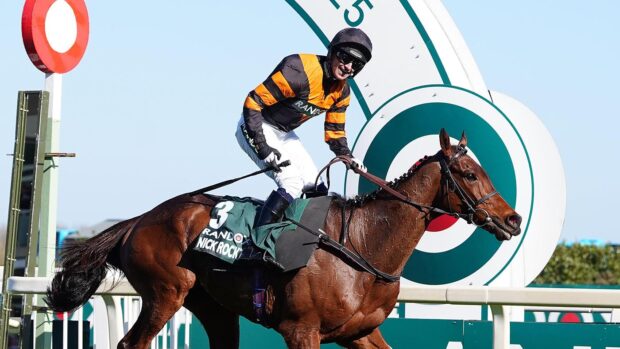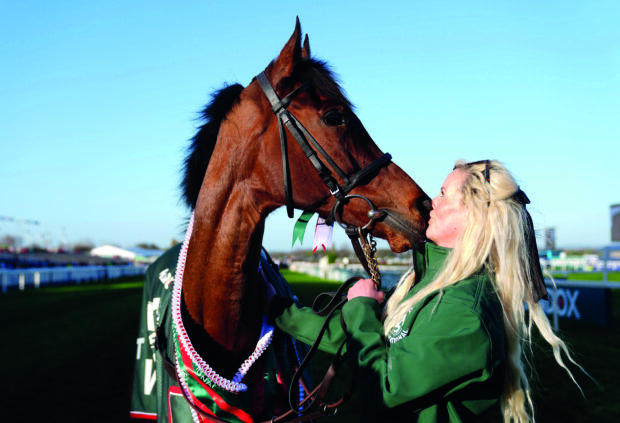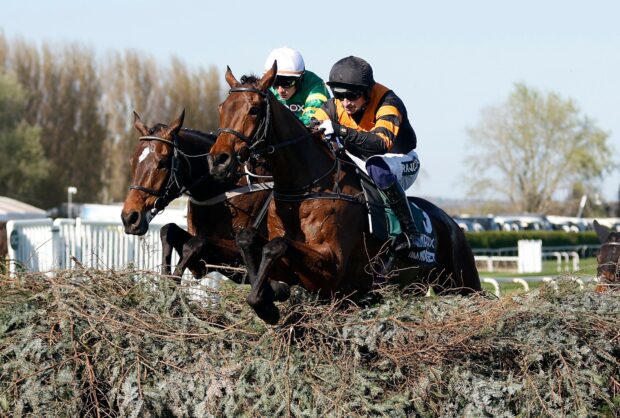Researchers at the University of Liverpool have identified a number of factors which affect whether a horse is likely to successfully complete the world’s most famous steeplechase, the Grand National.
The National is the longest race in the UK’s racing calendar at 4.5 miles, and with 30 fences to jump, it is a gruelling challenge to even the most experienced jumpers.
The research has been funded by Aintree Racecourse and is part of a larger study of National Hunt racing, which is aimed at improving safety in jump racing for both jockeys and horses.
Experience is a key factor in successful completion of the course, according to vets involved in the study. They found that horses who had successfully completed the National course previously were twice as likely to complete the course, and two-and-a-half times less likely to fall, than those that had never run on the course before.
Dr Chris Proudman, senior lecturer in equine surgery, explains: “Our research suggests that improved schooling over National-type fences or qualifying races over the Grand National course may improve completion rates and decrease the risk of horses falling.”
Gamblers should not be fooled however, for although experience may improve a horse’s chances of finishing the race, in the past 15 years only one winner had run in the race previous to their victory. That horse was Red Marauder, who returned home triumphant in the freak conditions of 2001, when only four horses finished.
While the going’s good . . .
Ground conditions also significantly influenced the number of horses passing the post. Ground classed as soft or heavy resulted in far fewer finishers, while firm ground also reduced the number of horses who completed the race.
Dr Proudman stresses that “providing good-to-soft ground may improve completion rates and decrease the risk of horses falling.”
The study confirmed the widely-held belief that the first fence is the most dangerous and often accounts for several fallers. This is believed to be because horses set off at such a quick speed from the start, and take time to settle, which can result in the run to the first fence being a battle between horse and jockey.
Doctor Peter Clegg, a senior lecturer in equine orthopaedics believes that the first fence in the Grand National ought not to account for as many fallers as it does.
He told HHO: “The first fence is by far the most dangerous. The risk of a horse falling decreases substantially once they are over the first fence, until the final fences when the risk increases once again.
“The first fence in the Grand National is a relatively small, innocuous looking fence, but it still has a huge risk-factor. Aintree are working hard on modifications to the fence to reduce the number of casualties.”
Horses for courses
On the basis of the research carried out at the University of Liverpool, this year’s Grand National should be a closed book. However, the researchers found it harder to pin-point factors such as weight, jockeys and trainers and the race itself throws up its own statistics.
- Corbiere, who won the race in 1983, was the last horse to carry a burden of more than 11st to victory
- Horses between seven and 12 years old have the best records in the race, and 15 of the past 20 races have been won by horses aged between nine and 11.
- The length of the race means that the horse should be a proved stayer, and ought to have won over at least three miles.
So according to the findings, this year’s contenders in the big race are few and far between. Southern Star, aged nine will be carrying 10st 10, and was a finisher last year. Royal Predica, a 10-year-old, carries 9st 12 and is an Aintree old-timer with two completions of the Grand National under his belt. Another old-timer is Blowing Wind, who has finished three times, twice coming in third. At 11 years old, carrying 9st 12, he could also strut his stuff this year.
But the bookmakers have other thoughts, and the researchers stressed that on the whole, starting prices are a good indication of a horse’s ability in the showcase race. So back to the drawing board, and it seems that picking the winner remains as much of a lottery as ever. Hedgehunter, Timbera and Clan Royal are currently making the best showing in the odds.



